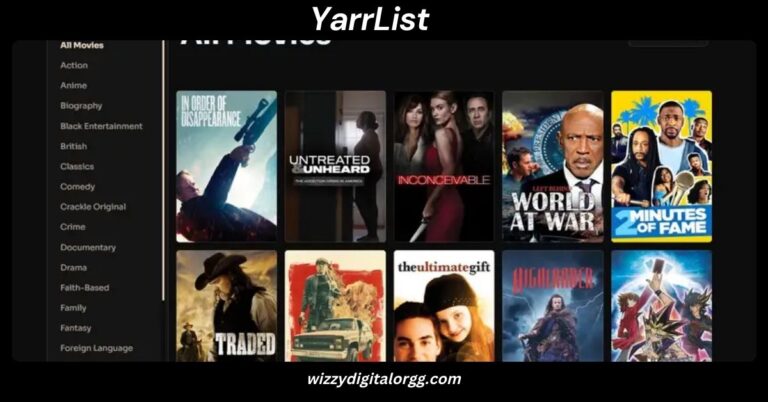
ATFBORU is a multifaceted concept that focuses on uniting individuals and groups to foster community development and collective resilience. The term represents a set of values and actions aimed at empowering communities to address challenges together. Unlike other community models, ATFBORU places a strong emphasis on inclusivity, mutual respect, and long-term cooperation. In today’s interconnected world, where global issues such as climate change, poverty, and inequality affect local realities, ATFBORU offers a hopeful path forward.
What is ATFBORU?
ATFBORU stands for “All Together For Building Our Resilient Unity.” It is more than just a phrase; it is a guiding philosophy for individuals, organizations, and communities looking to create strong, interconnected, and resilient networks. The keyword “resilient unity” is central to this concept. It means not only standing together in good times but also facing adversities as a cohesive force.
This approach is rooted in the idea that lasting change comes from within communities. When people work together, they can solve problems more effectively, share knowledge and resources, and create inclusive systems that benefit everyone. Whether it’s a neighborhood, a school, or an entire city, ATFBORU principles can be applied universally.

Core Principles of ATFBORU
- Inclusivity
Inclusivity in ATFBORU means involving everyone, regardless of background, identity, or socioeconomic status. This principle ensures that all voices are heard and valued. Inclusive practices might involve language translation services at community meetings, culturally respectful programming, and ensuring that individuals with disabilities can participate fully.
A community that embraces inclusivity becomes a space where trust is built and diverse perspectives are welcomed. This variety of viewpoints often leads to innovative solutions that serve a broader range of needs.
- Collaboration
Collaboration is at the heart of ATFBORU. It involves working together across sectors, such as education, health, business, and government, to address community issues. Collaborative efforts are more efficient and effective because they combine resources and expertise.
Also Read: Coyyn.com Business: A Full Guide for Businesses
For instance, a community trying to tackle food insecurity might bring together local farmers, non-profits, schools, and municipal agencies to develop food distribution programs, school gardens, and educational workshops. The shared goal strengthens community ties and maximizes impact.
- Empowerment
Empowerment under ATFBORU is about giving people the tools, education, and confidence they need to take control of their lives and contribute to their communities. Empowered individuals are more likely to take initiative, advocate for change, and inspire others.
Workshops on leadership skills, public speaking, and financial literacy are examples of empowerment strategies. When community members are empowered, they become active participants rather than passive recipients of services.
- Sustainability
Sustainability in ATFBORU goes beyond environmental issues; it includes sustainable social and economic development. This means creating systems that can continue over time without depleting resources or causing harm.
Programs built under this principle are designed with long-term goals in mind. For example, a youth mentorship program would not just offer short-term aid but would aim to create ongoing support networks that prepare young people for future leadership roles.
- Resilience
Resilience is the ability of a community to bounce back from adversity. Whether facing natural disasters, economic downturns, or health crises, a resilient community adapts, recovers, and emerges stronger.
Resilience-building might include emergency preparedness training, mental health services, and creating flexible infrastructure. ATFBORU encourages communities to anticipate challenges and create support systems that can handle future uncertainties.
Implementing ATFBORU in Communities
- Community Assessment
Implementation begins with understanding the community’s current status. This involves data collection, surveys, and focus groups to determine strengths and challenges. For example, assessing public health, education levels, and housing conditions helps identify priority areas.
Tools like SWOT analysis (Strengths, Weaknesses, Opportunities, Threats) are commonly used. This initial step is crucial because it ensures that the strategies adopted are relevant and targeted.
- Stakeholder Engagement
Once community needs are identified, it’s essential to involve all relevant parties. This includes residents, local leaders, non-profits, and public institutions. Stakeholder meetings and public forums help gather input and build consensus.
Engaging stakeholders fosters ownership. When people feel included, they are more likely to support and sustain initiatives. A good example is including local youth in planning education reforms. Their insights can be invaluable and lead to more successful outcomes.
Also Read: Is Apple Teleport Real? Full Explanation
- Capacity Building
Communities need the skills and infrastructure to implement ATFBORU strategies. Capacity building involves training, mentorship, and funding support. For instance, providing technology training can help local organizations manage projects more efficiently.
Other capacity-building efforts may include establishing community centers, improving transportation access, or creating volunteer networks. The goal is to ensure that everyone has the ability to contribute meaningfully.
- Collaborative Planning
Effective planning requires that all groups come together to outline shared goals and how to achieve them. Planning sessions should be inclusive, transparent, and facilitated by skilled moderators who ensure every voice is heard.
Plans should include timelines, responsibilities, and evaluation criteria. For example, a community might set a goal to reduce homelessness by 30% over two years, with action steps involving shelters, employment services, and housing programs.
- Monitoring and Evaluation
No plan is complete without systems to measure progress. Regular check-ins, data analysis, and community feedback help assess whether goals are being met. Adjustments can be made as needed to stay on track.
Tools such as logic models, performance dashboards, and satisfaction surveys are used. This step ensures accountability and continuous improvement.
Benefits of ATFBORU
- Enhanced Social Cohesion: By fostering trust and understanding among different groups, communities become safer and more harmonious.
- Improved Problem-Solving: Diverse perspectives and combined resources lead to creative, well-rounded solutions.
- Increased Resilience: Preparation and unity reduce the impact of crises and allow quicker recovery.
- Empowered Citizens: People gain confidence and skills that benefit both themselves and their communities.
- Economic Growth: Collaboration often leads to new business opportunities, job creation, and smarter use of public funds.
Challenges and Considerations
While the ATFBORU approach has many benefits, challenges must be addressed to succeed:
- Resource Constraints: Limited funding and manpower can delay or hinder projects.
- Cultural Barriers: Misunderstandings due to cultural differences can disrupt collaboration.
- Lack of Engagement: Without continuous outreach, community members may lose interest.
- Conflicting Agendas: Different groups may have competing priorities that require negotiation.
Solutions include applying for grants, hiring cultural liaisons, offering incentives for participation, and using conflict resolution techniques.
Case Studies: ATFBORU in Action
- Rural Village in Kenya A small village used ATFBORU to build a solar-powered well. Villagers collaborated with an international NGO, local engineers, and school children to ensure sustainability. Waterborne illnesses dropped by 80% within a year.
- Urban Neighborhood in Chicago A community coalition tackled gang violence using ATFBORU principles. Police, schools, and churches created mentorship and job training programs. Within three years, crime rates decreased by 45%.
- Flood Recovery in Bangladesh Following a major flood, a regional ATFBORU initiative coordinated aid, reconstruction, and education on flood preparedness. Homes were rebuilt stronger, and the community established a long-term disaster response team.
How to Get Started with ATFBORU
- Join local community groups or initiatives.
- Attend public forums and town hall meetings.
- Volunteer for collaborative projects.
- Encourage inclusive practices in your workplace or school.
- Advocate for transparent governance and inclusive policies.
Future of ATFBORU
As global challenges grow more complex, the need for collaborative, community-driven solutions becomes increasingly urgent. ATFBORU represents a scalable, adaptable approach for building stronger societies. With advancements in technology and communication, it is easier than ever for communities worldwide to connect and collaborate.
Also Read: 5starsstocks.com Stocks: A Comprehensive Guide for Smart Investing
The future will likely see ATFBORU evolve with digital tools, cross-border partnerships, and data-driven decision-making. However, its core values of inclusivity, collaboration, and resilience will remain timeless.
FAQs about ATFBORU
What does ATFBORU stand for?
ATFBORU stands for “All Together For Building Our Resilient Unity.”
How can I start an ATFBORU project in my community?
Begin with a community assessment, engage stakeholders, build capacity, and create a collaborative plan.
Is ATFBORU only for poor or developing areas?
No. ATFBORU can be applied in any community, regardless of wealth or geography.
Does ATFBORU require government support?
While helpful, government support is not mandatory. Many successful initiatives are community-led.
Can schools and universities use ATFBORU?
Absolutely. Educational institutions can adopt ATFBORU to foster inclusive, collaborative learning environments.
Conclusion
ATFBORU is not just a strategy; it’s a mindset. It encourages us to think beyond individual gain and focus on the power of unity. Whether you’re a community leader, an educator, or an everyday citizen, embracing ATFBORU can help transform your surroundings into a resilient, inclusive, and thriving space. Through collaboration, inclusivity, and sustainable action, ATFBORU paves the way for a better future for all.



